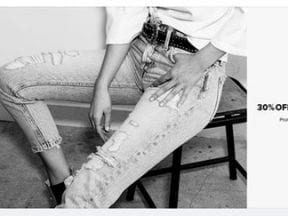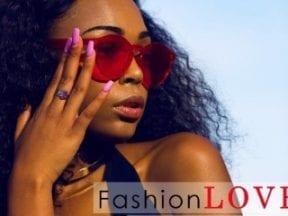
Advertising options for smaller fashion and lifestyle merchants include influencer marketing, such as on Facebook Groups. This example group focuses on fashion ideas for females over 40.
Smaller fashion and lifestyle merchants typically have limited budgets. They must advertise wisely. There’s the cost of the advertising itself, as well as the expense of creating the strategy, the message, and the design. Moreover, merchants need to monitor and tweak all campaigns to maximize return on investment.
To be sure, adverting can be an excellent acquisition source. But in my experience, it works best for merchants with unique products, larger margins, and the ability to follow up with prospects.
Without well-structured follow-up email campaigns — transactional, informational, and promotional — and retargeting, your advertisement money will likely go down to drain. New customers will forget about their purchases and will revert to their prior shopping sources.
Thus, small companies on shoestring budgets would be better off to grow organically via search engine optimization, social media, and email. Certainly those channels are time and labor intensive. But the efforts will pay off.
However, if you have the resources to invest in advertising, consider the following channels.
Influencer Marketing
The four primary influencer marketing channels are YouTube, Instagram, Facebook Groups, and blogs. Influencer marketing can produce strong ROI for specific products and niches. Smaller influencers on YouTube, Instagram, Facebook Groups, and third-party blogs are often affordable. Sometimes merchants can negotiate a barter, to exchange an influencer’s promotion for the merchant’s products.
YouTube. To evaluate a potential YouTube channel, make sure (a) it’s active, (b) subscribers belong to your target market, (c) they live in a territory where you store ships, and (d) they are engaged in the channel. Videos on YouTube’s have the most extended lifespan of all influencer channels.
Instagram promotions have the shortest lifespan. But they are much cheaper, typically, than promotions on YouTube. Again, make sure an Instagram account is active with engaged followers. Third-party tools can measure engagement rates and followers (authentic or fake). When an Instagram influencer is advertising your products, make sure that she changes her profile to link to your promotions for at least three days.
Facebook Groups work best for unique and niche products, wherein the selling price is secondary. Facebook Group members will buy at seemingly any price if products cater to their particular interests and needs. Here are three examples.
- In a Tesla group, a company that makes dog seats has raised prices repeatedly. The seats continue to grow in popularity, however.
- In a fashion group for women over 40, merchants can sell more or less any product that will make a woman look younger.
- In a sports group, products that help members lose weight will sell at very high prices.
The key to success on Facebook Groups is to provide good supporting visuals, highlight the benefits, and supply testimonials from customers.
Blogs. Influencers’ own blog posts have a long life, but they generate the most sales in the beginning as the posts are usually pushed down the pages over time.
Google Ads
Invest in pay-per-click ads on Google only if you have quality products with at least 250 percent markup margins. Ideally, test your Google campaigns slowly, with no more than a few ads showing in several cities. If successful, expand the campaigns to larger regions and to different time zones.
Google Shopping ads are highly visual. For success, make sure that your products have unique designs and features with competitive pricing. Use professional photography.
I recently analyzed Google Shopping ads for more than 200 fashion boutiques. They all had one problem in common: The photography did not accurately represent the products. Dark backgrounds, improper angles, and random models did not help.
Implementing Google Shopping feeds might seem simple. But it requires lots of work — optimizing titles (the most critical part of the feed), color attributes, dynamic repricing, and sales promotions.
Facebook Ads
Facebook ads are popular. But remember that Facebook is where people hang out and communicate with their families and friends. Merchants that attempt to use Facebook ads to drive traffic to the product pages will likely be disappointed. Facebook is not a shopping platform.
However, consumers seek useful, quality information. Use that approach with Facebook ads. Develop how-to guides and similar content as lead magnets, where prospects download the info in exchange for their emails. Advertise that content on Facebook. When users respond to the ads and download the content, send a transactional “thank you” email that includes a description of your store and products.
After that, follow up with well-crafted promotional and informational email campaigns.
Affiliate Marketing
I used to assemble many affiliate marketing programs for various fashion and lifestyle clients. But in 2019, you can accomplish much the same or more with influencer outreach. Affiliate marketing is very time-consuming. If you don’t have a dedicated team (external or in-house) to manage and monitor, you will likely waste money, in my experience. Smaller merchants should probably avoid this advertising channel.




